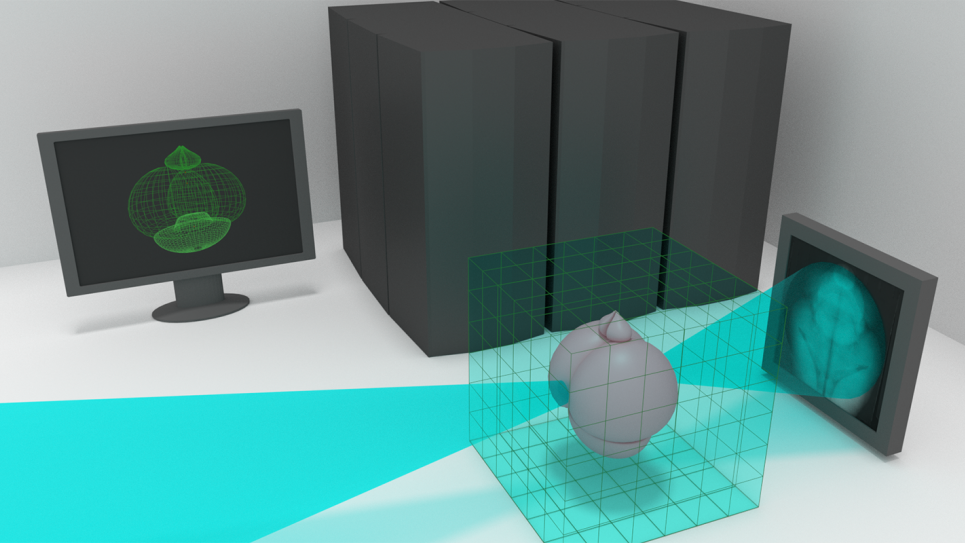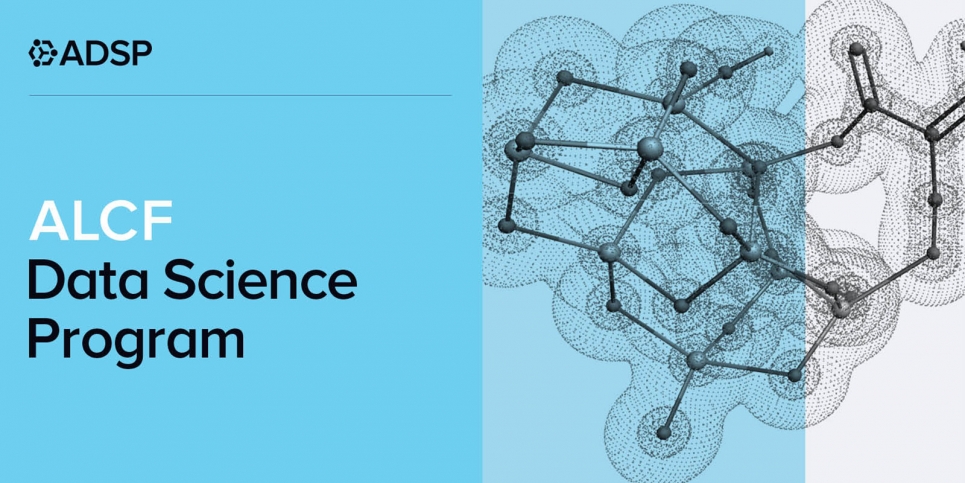“The ADSP awards this year advance our goals toward accelerating learning-based projects on ALCF systems, while also emphasizing the merger of deep learning with simulation codes,” said Thomas Uram, ALCF computer scientist and co-lead of the ADSP. “These projects will continue to push the ALCF’s Theta supercomputer in exciting new directions, combining high-throughput workflows, data-intensive science, and scalable machine learning.”
ADSP awards last for two years and are renewed on an annual basis.
New ADSP projects
Advanced Materials Characterization with AI-Informed Computation
Marco Govoni, Argonne National Laboratory
Numerical simulations of the physical processes that occur in materials when they are excited with light are essential for the understanding and rational design of broad classes of materials for energy, quantum computation, and sensing applications. However, computationally intensive workflows are currently limiting the applicability of first-principles methods to complex systems, effectively hindering real-time identification and interpretation of experimentally observed physical processes. This project seeks to address this challenge by developing an AI-informed computational framework that integrates machine learning into existing workflows, thereby enabling the prediction of spectroscopic signatures of materials with fast turnaround.
Dynamic Compressed Sensing for Real-Time Tomographic Reconstruction
Robert Hovden, University of Michigan
3D characterization of materials at the nano- and mesoscale has become possible with electron and x-ray tomography. To overcome experimental limitations and improve image quality, compressed sensing (CS) algorithms leverage the notion of sparsity to provide superior resolution. However, while CS algorithms provide high resolution, they are computationally expensive and sensitive to additional tuning parameters. To overcome these challenges, this project aims to enable real-time CS tomography by developing a dynamic tomography framework that performs in-situ reconstruction as new data are collected.
Developing High-Performance-Computing Applications for Liquid Argon Neutrino Detectors
Andrzej Szelc, The University of Manchester
Liquid argon time projection chambers (LArTPCs), including the Short Baseline Near Detector (SBND) under construction at Fermilab, are a quickly growing detector technology. They are set to answer the biggest questions in neutrino physics by measuring the interactions of these ghost-like particles with unprecedented precision. This precision results from the high resolution of LArTPCs and the large number of neutrino interactions these detectors register. However, it will also create a formidable computing challenge to simulate, reconstruct, and process the data the SBND detector will acquire. To address this challenge, this project aims to use leadership computing resources to simulate and reconstruct neutrino interactions and the cosmic ray backgrounds that contaminate the detector readout. The team will develop tools to enable fast reprocessing and quick turnaround times, which are needed to optimize the performance of the reconstruction and the precision of detector simulations. Instead of a simulation processing campaign lasting for months, it could be completed in days on the ALCF’s Theta supercomputer. This will permit many more iterations of data processing that will lead to more precise scientific analyses and broaden the range of physics topics covered.
Renewed ADSP projects
Deep Learning at Scale for Multi-Messenger Astrophysics through the NCSA-Argonne Collaboration
Eliu Huerta, University of Illinois at Urbana-Champaign
Multi-messenger astrophysics refers to the contemporaneous observation of astrophysical phenomena using gravitational waves, electromagnetic radiation, neutrinos, and cosmic rays. Full realization of the goals of multi-messenger astrophysics requires the resolution of outstanding computational challenges, which this project seeks to address through the development of algorithms that significantly increase the depth and speed of gravitational wave searches and that process terabyte-size datasets of telescope images in real-time. A crucial impact will be the real-time, at-scale discovery of multi-messenger sources, providing a more complete picture of some of the universe’s most mysterious and powerful events.
X-ray Microscopy of Extended 3D Objects: Scaling Towards the Future
Chris Jacobsen, Argonne National Laboratory and Northwestern University
With improvements in resolution, x-ray microscopy is approaching a specimen thickness limit beyond which one violates the pure projection approximation (PPA) needed for standard imaging. Sufficient understanding of the underlying problem has enabled development of a novel approach to beyond-pure-projection x-ray image reconstruction utilizing powerful—but computationally demanding—methods. This project aims to scale up these methods to meet the challenge of high-resolution 3D x-ray imaging beyond the PPA, benefitting not just cell and brain imaging but the full range of future nanoscale imaging activities at the APS and other DOE light sources.
Machine Learning Magnetic Properties of van der Waals Heterostructures
Trevor Rhone, Harvard University
The discovery of two-dimensional ferromagnetic materials in 2017 ushered in a new era of studies of magnetic order. Using a data-driven approach, this project combines machine learning and high-throughput density functional theory calculations to study van der Waals materials and predict their magnetic and thermodynamic properties. This non-traditional approach facilitates the rapid identification of new functional materials that will have broad impacts for science and industry.
Argonne National Laboratory seeks solutions to pressing national problems in science and technology. The nation's first national laboratory, Argonne conducts leading-edge basic and applied scientific research in virtually every scientific discipline. Argonne researchers work closely with researchers from hundreds of companies, universities, and federal, state and municipal agencies to help them solve their specific problems, advance America's scientific leadership and prepare the nation for a better future. With employees from more than 60 nations, Argonne is managed by UChicago Argonne, LLC for the U.S. Department of Energy's Office of Science.
The U.S. Department of Energy's Office of Science is the single largest supporter of basic research in the physical sciences in the United States and is working to address some of the most pressing challenges of our time. For more information, visit https://energy.gov/science

